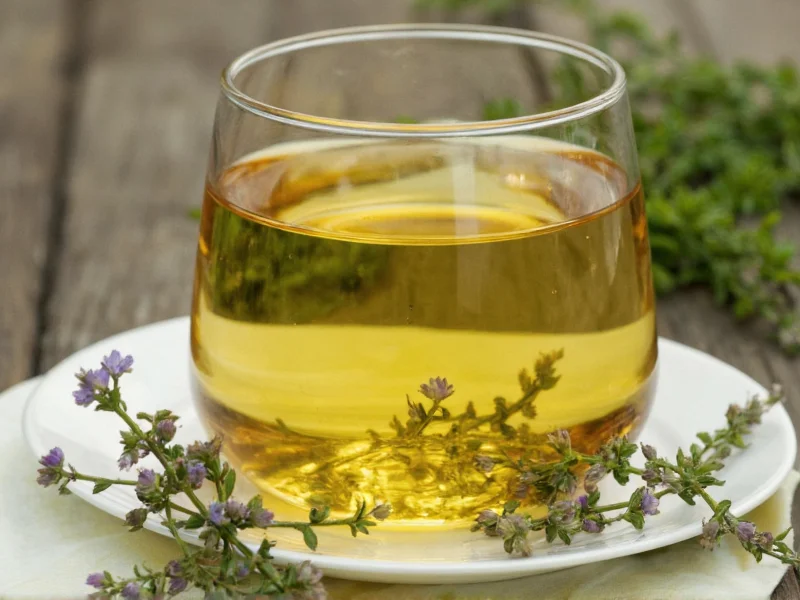Thyme tea offers a distinctive earthy, slightly minty flavor profile that distinguishes it from more common herbal teas. Unlike true teas derived from Camellia sinensis, thyme tea qualifies as a tisane—meaning it comes entirely from non-tea plant sources. The most commonly used variety for tea preparation is common thyme (Thymus vulgaris), though lemon thyme and other cultivars also work well.
When preparing thyme tea, understanding proper harvesting and brewing techniques significantly impacts both flavor and potential benefits. Fresh thyme generally provides a more vibrant taste compared to dried, though dried thyme offers convenience and longer shelf life. The active compounds in thyme, including thymol and carvacrol, contribute to its characteristic aroma and potential properties.
Understanding Thyme Varieties for Tea
Not all thyme varieties work equally well for tea preparation. Common thyme (Thymus vulgaris) remains the most popular choice due to its balanced flavor profile. Lemon thyme (Thymus citriodorus) offers a citrus note that many find appealing, particularly when combined with honey. Wild thyme (Thymus serpyllum) provides a more intense flavor that works well in small quantities blended with milder herbs.
Traditional Preparation Methods
Proper preparation maximizes both flavor and potential benefits of thyme tea. The ideal water temperature ranges between 90-96°C (194-205°F)—just below boiling—to preserve delicate compounds. Steeping time significantly affects the final product: 5-7 minutes yields a mild infusion, while 10-15 minutes creates a stronger, more robust tea.
| Preparation Method | Water Temperature | Steeping Time | Flavor Profile |
|---|---|---|---|
| Basic Infusion | 90-96°C (194-205°F) | 5-7 minutes | Mild, aromatic |
| Strong Brew | 90-96°C (194-205°F) | 10-15 minutes | Robust, earthy |
| Cold Brew | Cold water | 4-8 hours | Subtle, refreshing |
Flavor Pairing and Customization
Thyme tea's versatility shines when combined with complementary ingredients. Many find that adding lemon enhances the herbal notes while providing vitamin C. Honey balances thyme's natural bitterness, creating a soothing combination particularly valued during seasonal changes. For a more complex flavor profile, consider blending thyme with other herbs like mint, rosemary, or sage.
Fresh thyme tea preparation offers distinct advantages over using dried herbs. When using fresh thyme, gently bruise the leaves between your fingers before steeping to release essential oils. A standard ratio is 1-2 teaspoons of fresh leaves per 8 ounces of water. For dried thyme, use approximately half that amount since the drying process concentrates the flavors.
Seasonal Harvesting Considerations
The timing of thyme harvesting affects both flavor intensity and compound concentration. Many herbalists recommend harvesting thyme in the morning after the dew has evaporated but before the sun reaches its peak. This timing captures the highest concentration of essential oils. When harvesting for tea, select stems with vibrant green leaves, avoiding any that show signs of flowering as this can alter the flavor profile.
Sustainable Sourcing Practices
Whether growing your own thyme or purchasing it, sustainable practices ensure both quality and environmental responsibility. Thyme thrives in well-drained soil with ample sunlight and requires minimal watering once established. For those purchasing thyme tea, look for suppliers who practice responsible harvesting and transparent sourcing. Organic certification can provide assurance of pesticide-free cultivation, which is particularly important for herbal preparations.
Storage Techniques for Maximum Freshness
Proper storage maintains thyme's flavor and potential properties. Fresh thyme stays viable for 1-2 weeks when stored in the refrigerator with stems in water (like cut flowers) and covered loosely with a plastic bag. Dried thyme retains optimal quality for 6-12 months when stored in airtight containers away from light and moisture. Avoid storing near strong-smelling foods as thyme readily absorbs surrounding odors.
Integrating Thyme Tea into Daily Wellness Routines
Many people incorporate thyme tea into their daily wellness practices, particularly during seasonal transitions. The ritual of preparing and enjoying a warm cup can provide both physical and mental benefits. Some prefer thyme tea in the evening due to its caffeine-free nature, while others enjoy it throughout the day. When exploring herbal teas like thyme, consistency matters more than quantity—a regular, moderate intake typically yields better results than occasional heavy consumption.











 浙公网安备
33010002000092号
浙公网安备
33010002000092号 浙B2-20120091-4
浙B2-20120091-4